
I’m starting to come right so you’ll be hearing more and more from me over the next couple of weeks. But it may still take a little time to get fully up to speed – please keep checking your RSS.
x Anna

I’m starting to come right so you’ll be hearing more and more from me over the next couple of weeks. But it may still take a little time to get fully up to speed – please keep checking your RSS.
x Anna
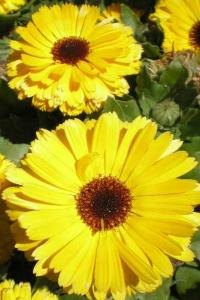
Plangarden’s three part series first takes you through knowing your plant families to some common blunders. Followed up by a comparison of companion planting guides, all in handy pdf or snazzy slideshows. It’s great stuff, a handy reference with plenty of commonsense:
“credible sources like Cornell University’s Dept. of Horticulture, enjoin gardeners not to hang on to every word found in a CP guide as providing foolproof solutions. Experts encourage us to frequently check our plants (go ahead, look under the leaves!) and document observations from our own plant combinations.”
So read up, experiment, and hopefully all your plants will be zinging along with synergistic vigour soon.
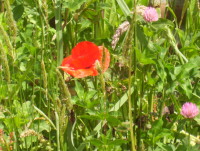
My particular favourite is:
Lesson 5: The plant diversity of your lawn and gardens is directly correlated with your IQ. This goes without saying, and it explains why lawn monoculturalists are so difficult to teach.
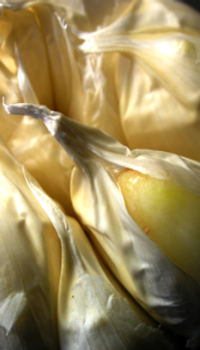
Those of us in the Southern Hemisphere need to be planning our garlic crops now. It’s super easy to grow but you need to have your beds ready and you need to get your cloves to plant. Don’t plant the stuff from the supermarket, it’s too dry and just won’t sprout. Get in to your garden centres quick! Last year wasn’t a great garlic year so everyone will be racing in to buy bulbs.
Traditionally, garlic bulbs go in on the shortest day but a few weeks early will give them a good boost. Remember, garlic stays in the ground for 6 months so you need to think carefully about where you want it. You can plant into pots if you aren’t sure where you’re going to be that far out.
I’ve just seen this great trailer for a new movie. It could be a trailer for my mind at the moment. Check out Fresh the Movie.
[youtube=http://www.youtube.com/watch?v=KwR44T69_Is]
I love simple, cheap and appropriate ideas that make gardening easier and fun. At the first Seedy Sunday we showed three videos with this philosophy in mind.
My two previous attempts at worm farming had ended badly with the bins being overrun with nasties that killed off the worms. But I so love the simplicity and ease of this idea I’m going to give it another shot. This is a great way to get nutrients straight into your garden.
[youtube=http://www.youtube.com/watch?v=scUTrypzyY0&hl=en&fs=1]

Using old guttering provides the perfect depth for lettuce, spring onions, radishes, some cute little Parisian market carrots and most of your herbs. It’s easy maintenance and a great way to recycle.
How does your garden grow? (Juneau Empire via Make)
(via Lifehacker)
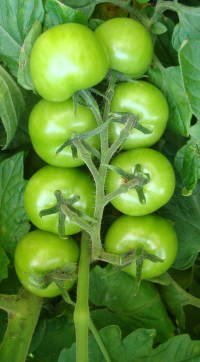
Upside-down tomato plant hanging contraptions have been hanging around for years and I’m a bit skeptical. bit skeptical. I’ve heard lots of people marvel over them but I’ve not seen a pic of the plants actually growing in them. The only pics I’ve seen have clearly been taken for advertising purposes when the plants are in full fruit. Do upside down tomato plants work?
My heart always goes “Oooo, that looks nice”. But my head goes, “but what about the auxins?” Auxins are hormones that control aspects of plant growth – things like the flowering, fruiting, bulb formation, dormancy etc.
More on auxins after the jump, along with links to how to test these mad ramblings…

This is mainly driven by large Dutch companies such as Haakman, aiming to supply international customers year-round. New Zealand-produced bulbs are used to fill the gap in northern hemisphere production for early and late supply. Tulip production is based in Tapanui, Southland.
So if you receive tulips between October and January, there’s a pretty good bet they come from New Zealand. Image of NZ tulip fields by Southland Times via Te Ara.
More beautiful tulip images at Istanbul Tulip Festival
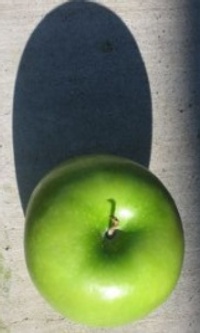
I can maybe see what they’re saying about hayfever. I can also see that in diversifying our diet, we eat new compounds that could cause allergic reaction.
I believe though, it’s more likely that kids are actually allergic to the high levels of pesticides in the fruit and veg. The cited celery and bananas being amongst the most pesticide-laden of products.
But such horrible headlines! ‘The tiniest piece of celery can leave me gasping for breath’: Rising number of children allergic to fruit and veg.
Ridiculous scaremongering for those that only read the sensationalist headlines. All the good work that’s been done on promoting healthy eating in England will have just taken a giant step backward.